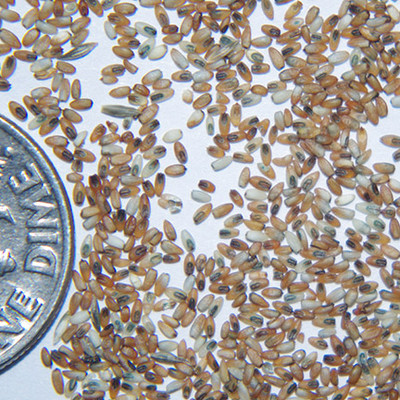Sold by the PLS pound
Botanical Name: Eragrostis curvula
Weeping lovegrass, is a rapidly growing warm-season bunchgrass that was introduced into the U. S. from East Africa. The many long, narrow leaves emerging from a tight tuft are pendulous, with the tips almost touching the ground. The drooping leaf characteristic gives rise to the name “weeping” lovegrass. Leaf height is rarely above 12 inches. The seed heads are open panicles, reaching a height of 30 to 40 inches and containing numerous small, fine seeds.
Uses
Erosion control: Weeping lovegrass is used as a temporary cover for erosion control purposes. On surface mine spoil, it provides almost immediate cover on steep outer slopes where spoil is rather acidic and of low fertility.
Crops: Weeping lovegrass is used as a nurse crop when seeding sericea lespedeza, coastal panic grass, or switchgrass. When seeding black locust or bristly locust, it serves as a companion species.
Adaptation
Weeping lovegrass prefers a light-textured, well-drained soil, and will thrive on soils of low fertility. Climatic conditions determine its range of adaptation. Low winter temperatures will prevent regrowth and cause the grass to act as an annual or a short-lived perennial. Weeping lovegrass is distributed throughout the southern United States. For a current distribution map, please consult the Plant Profile page for this species on the PLANTS Website.
Establishment
This grass is easy to establish by seed. Seed alone at a rate of 3 to 5 pounds per acre, or 1 to 2 pounds per acre in mixtures with other species. Seeds will germinate quickly and plant growth is rapid. The seed is extremely fine, requiring mechanical seeding equipment to have small seed attachments. If seeded with a ‘hand’ cyclone seeder, the lovegrass seed should be mixed with a diluent or a carrier (cornmeal, sand, or fine sawdust) for uniform distribution of seed. Do not cover seed more than 1/2 to 1 inch on sandy soils; 1/4 inch is sufficient on silt loams. Cultipacking soil before seeding is helpful. USDA NRCS National Plant Materials Center Beltsville, MD Sites too steep or stony for use of mechanical equipment can be seeded without soil scarification. Broadcast seeding by air or use of hydroseeders is successful if seeding rates are increased to compensate for poor seedbed. Where possible, the soil should be scarified and firmed. Normally, weeping lovegrass can be planted after danger of severe frost is over, and anytime throughout the summer with success. Lime and fertilizer needs are similar to that for tall fescue and ryegrass when used for temporary cover.
Management
Because of its short duration, there is no management required for weeping lovegrass. It is palatable to livestock and should be protected where this possibility exists.




